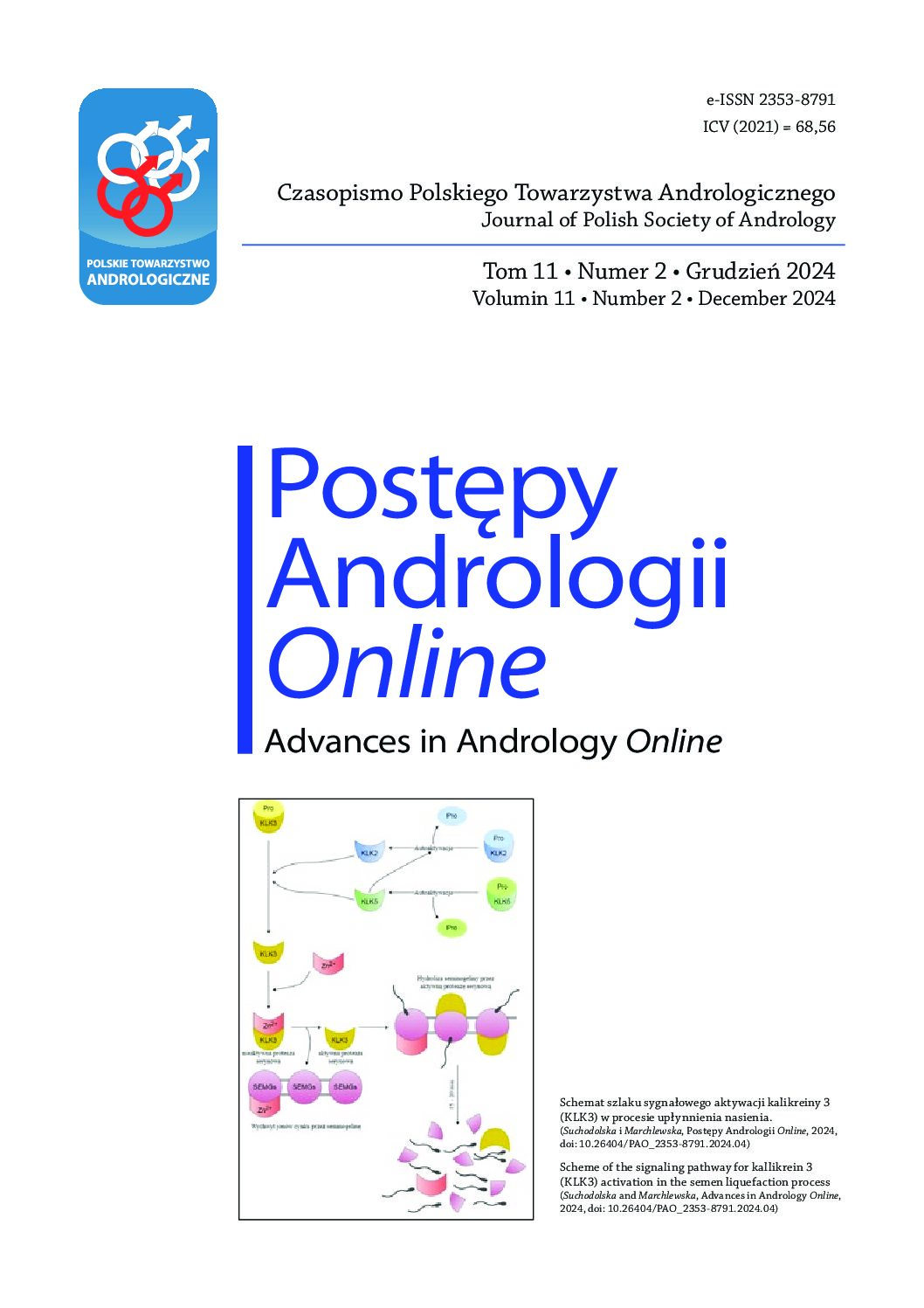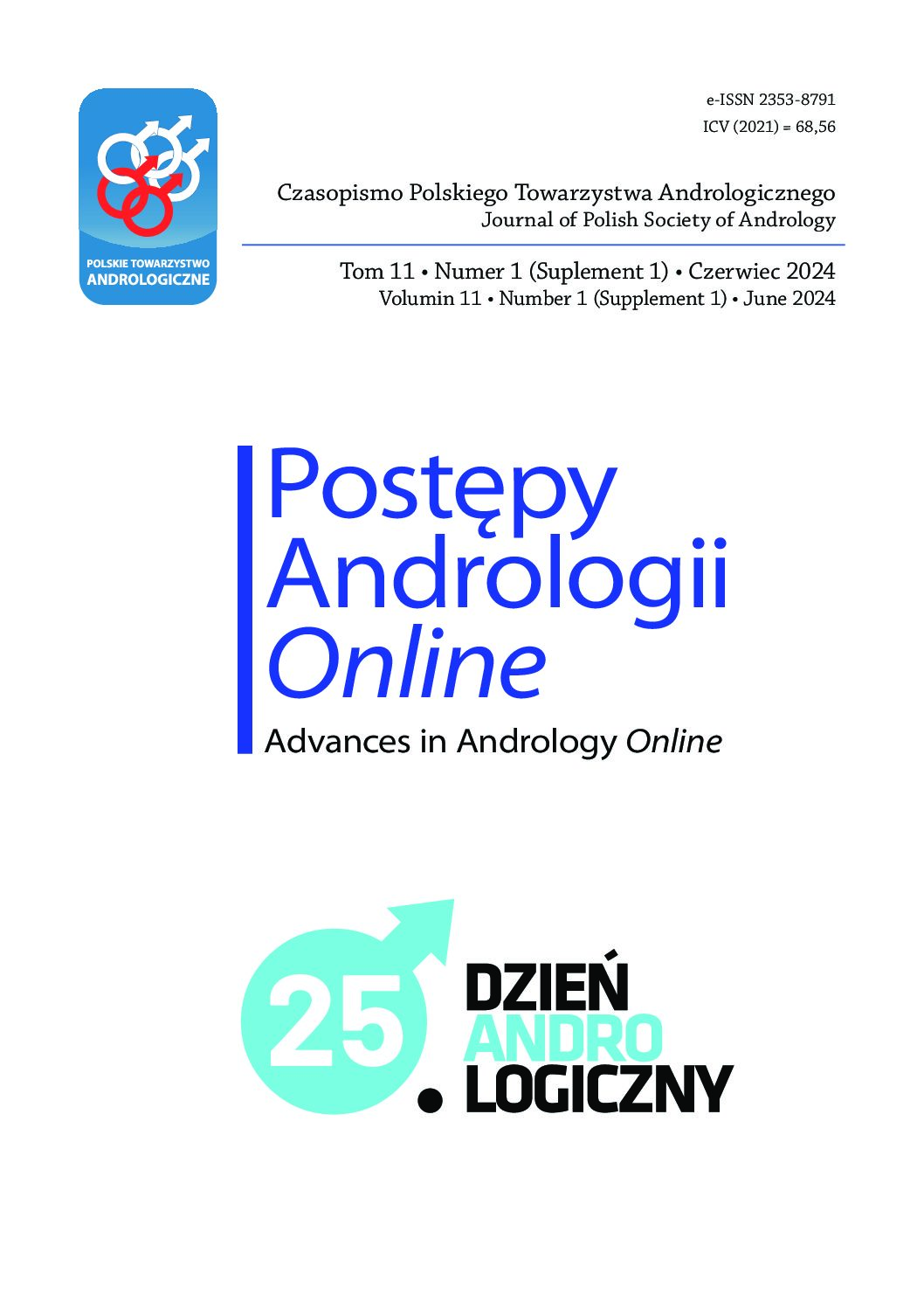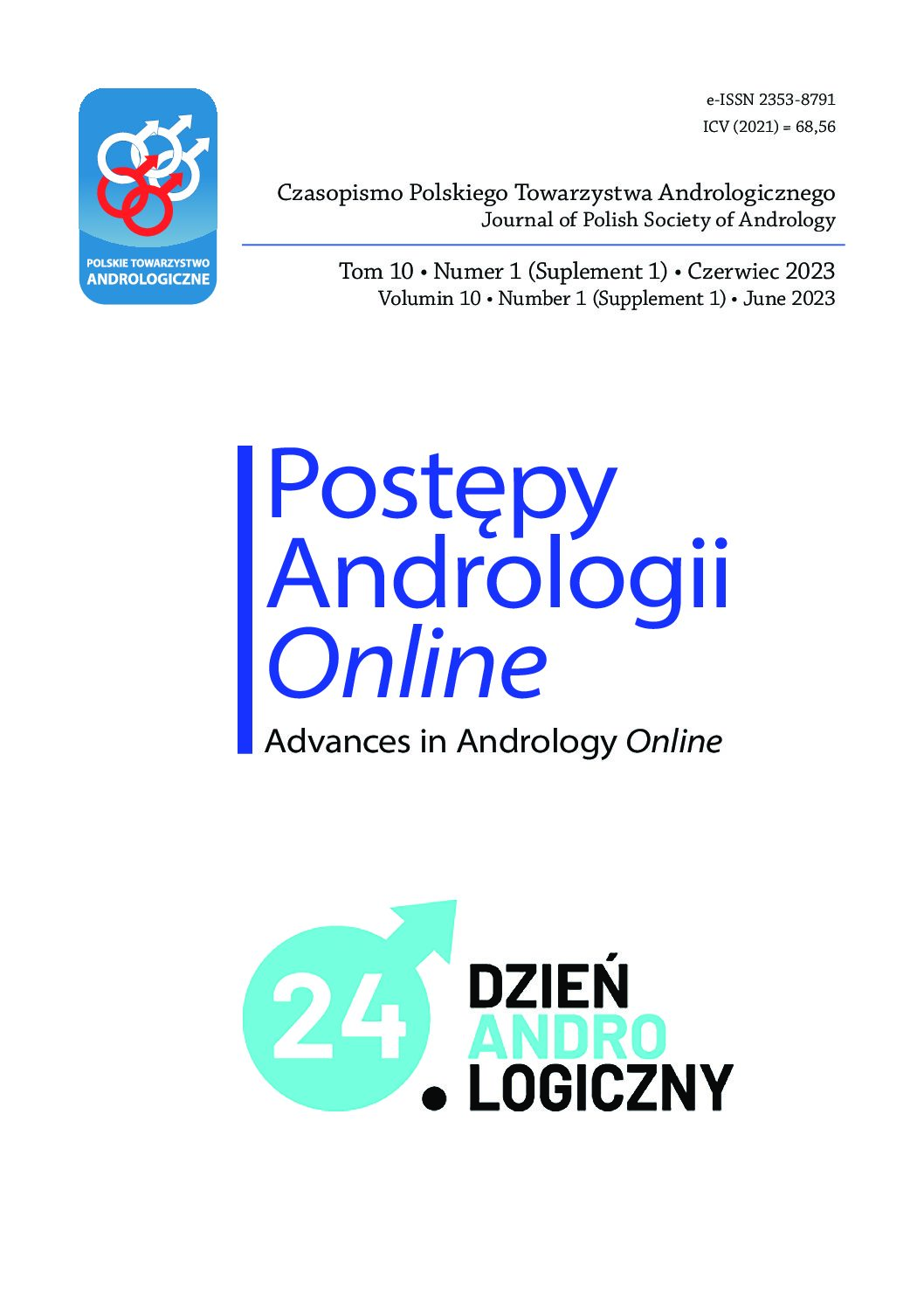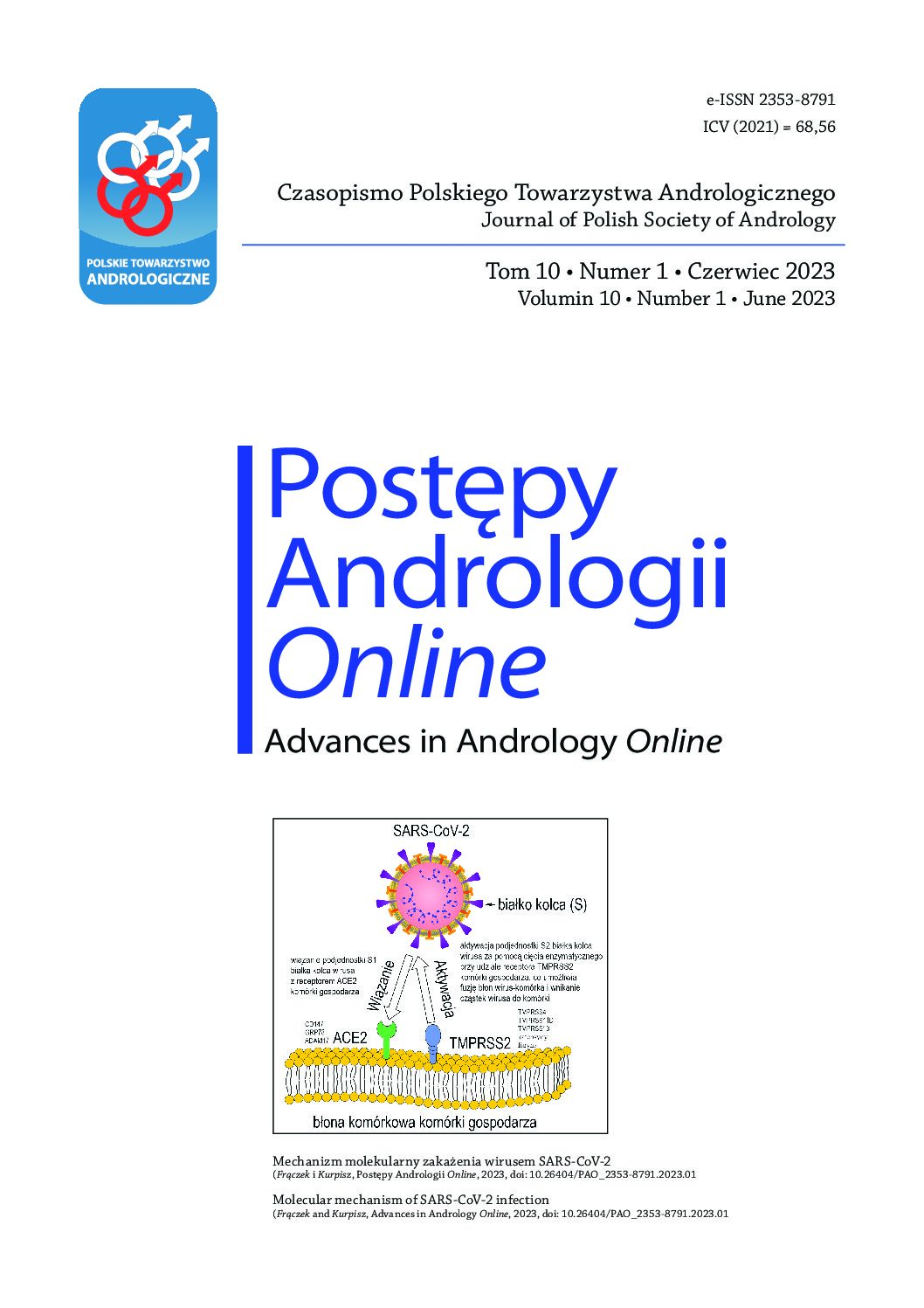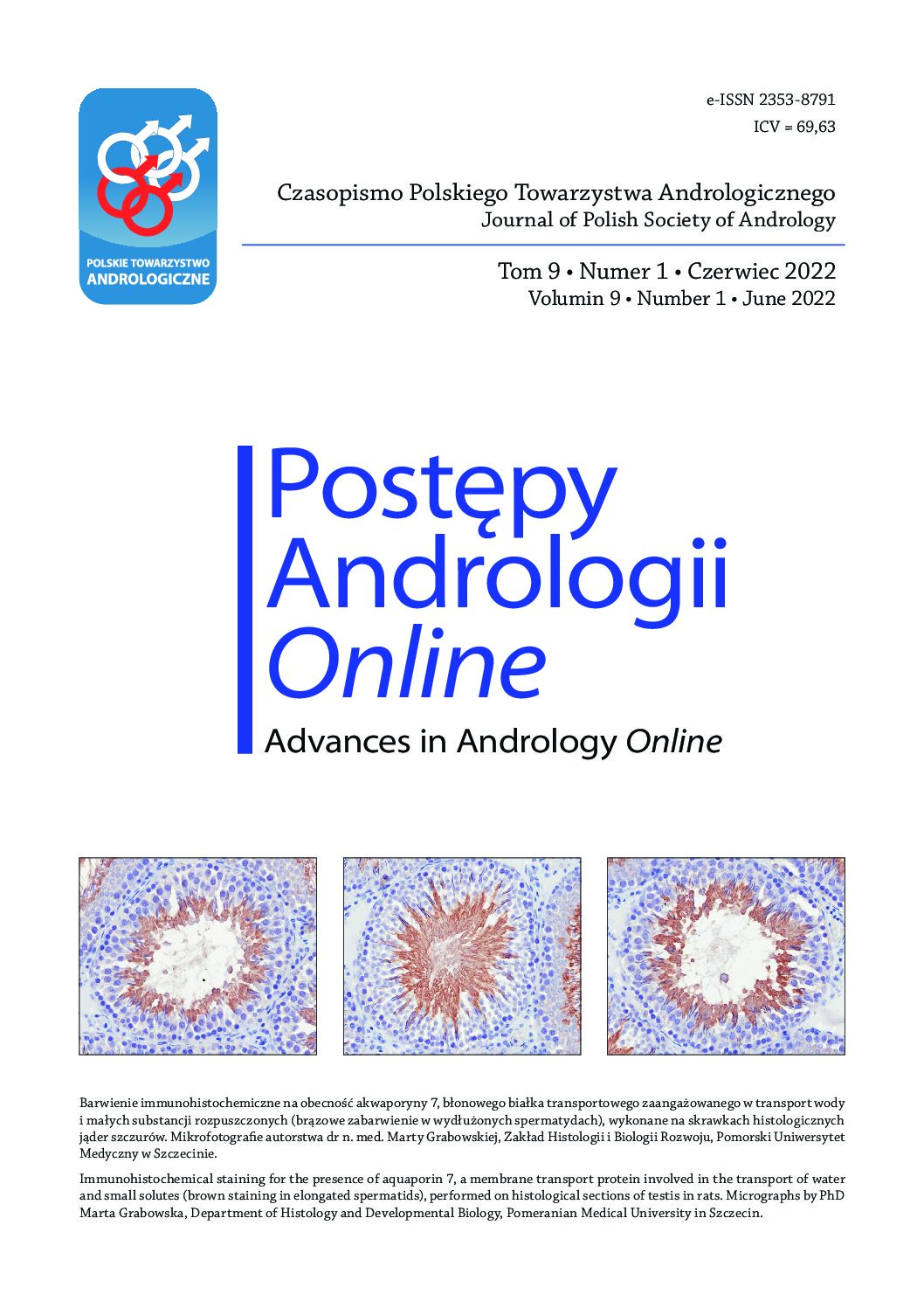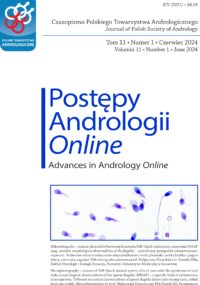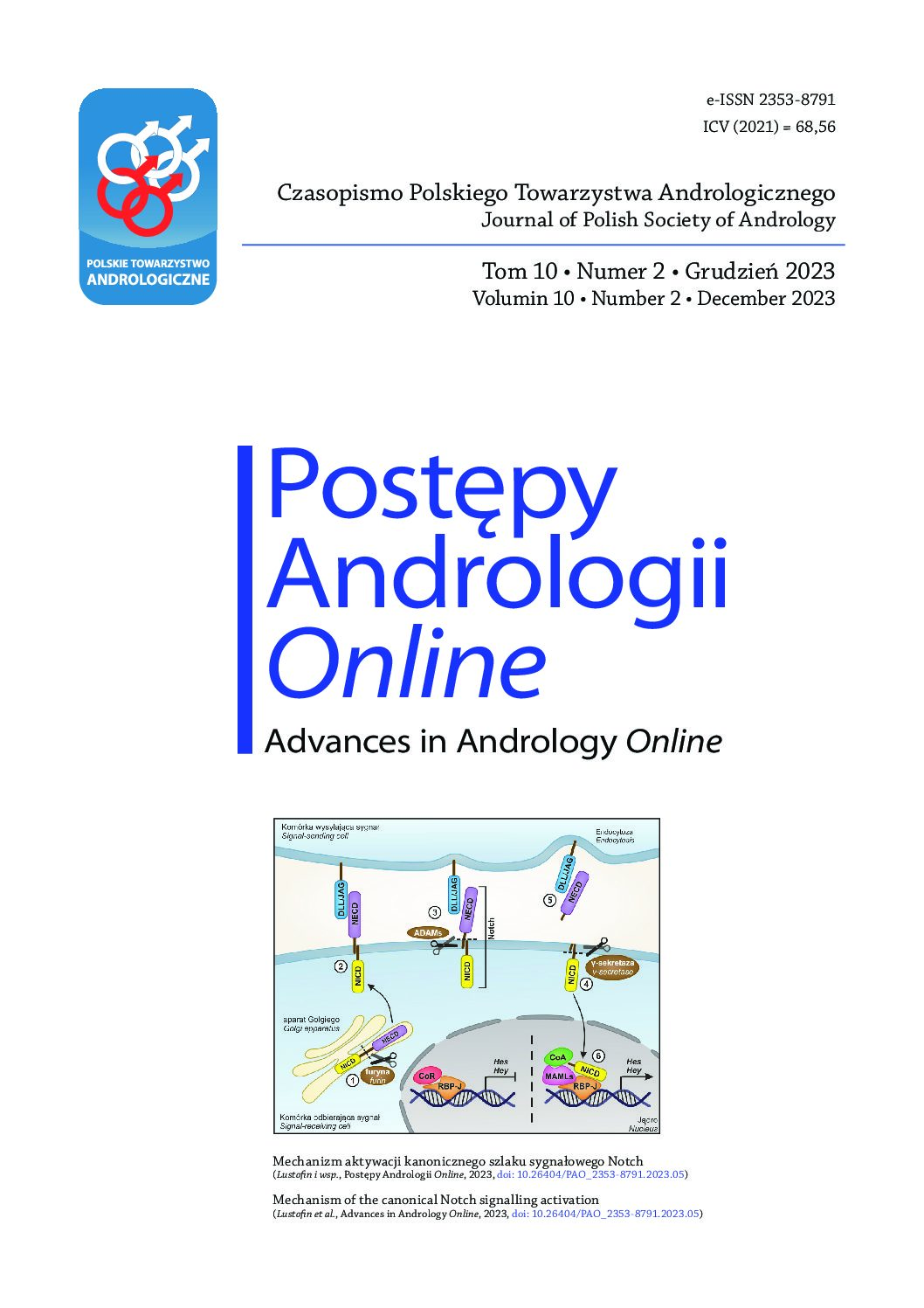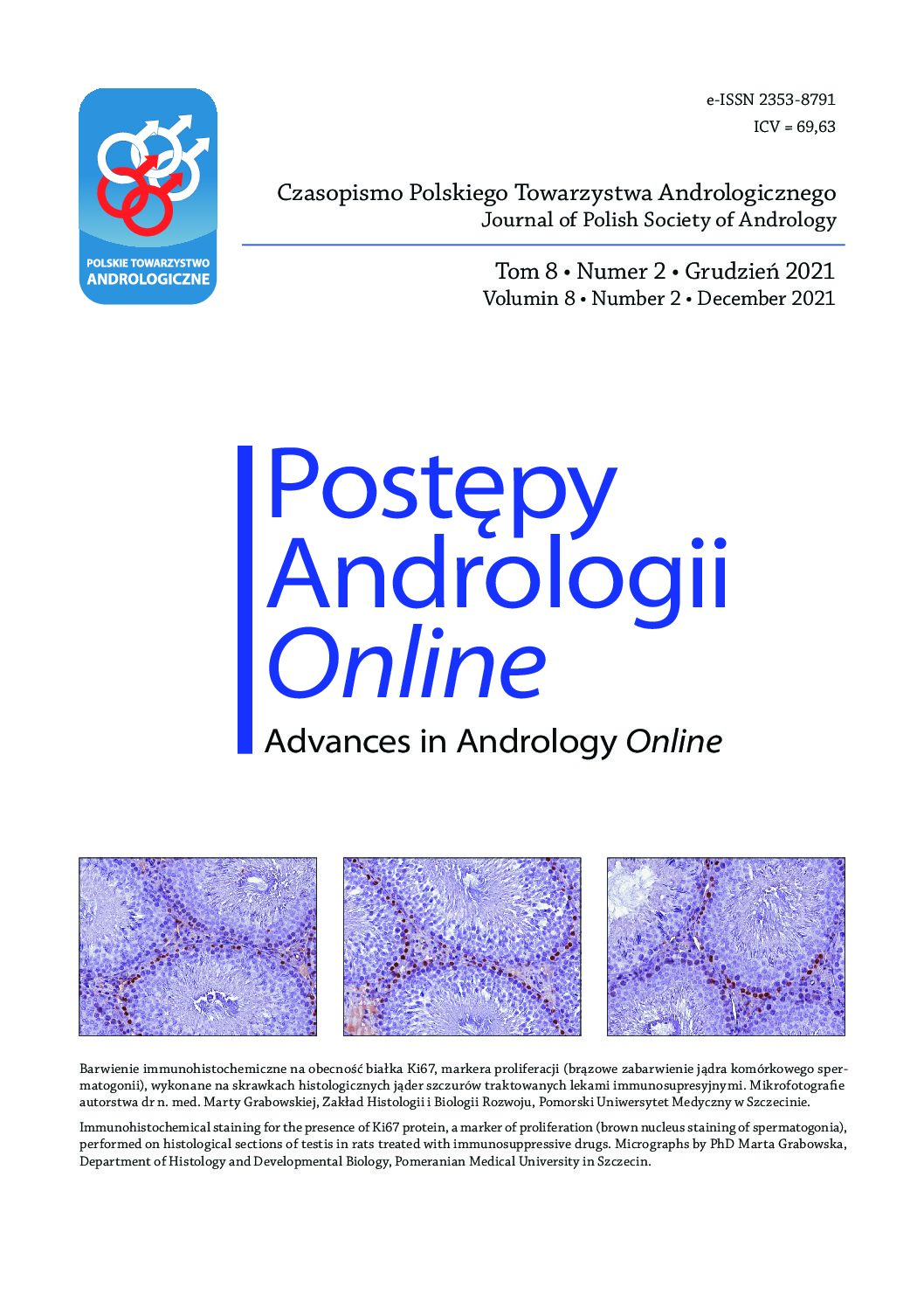Finasteride and male fertility and its transgenerational consequences – a literature review
Finasteride, is a drug used, among other things, to treat androgenetic alopecia, is being taken by men at an increasingly younger age and, thus, for a longer period of their lives. The effect of finasteride on male fertility, by reducing dihydrotestosterone levels, is currently the subject of much research. This article reviews the current knowledge on this topic. The literature review looked at papers published up to May 2023, by searching PubMed, Google Scholar, Embase and NIH databases for information on the effects of finasteride on the occurrence of testicular morphological changes, changes in semen parameters, and the effects of taking this drug through the parental generation, on male offspring and their fertility. Among the morphological changes described were abnormalities in: Leydig cells (decreased number and/or hyperplasia), seminiferous tubules (decreased diameter, irregular shape, necrosis), germinal cells (decreased in number or changes in phenotype). Described seminological changes included a decrease in the number of spermatozoa in the ejaculate, a decrease in their motility and viability and an increase in the sperm DNA fragmentation index. Intergenerational consequences were associated with low offspring numbers, decreased pregnancy frequency or some congenital defects of the male reproductive and urinary system.
